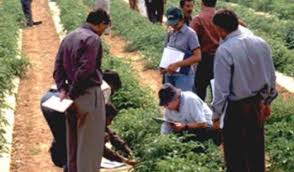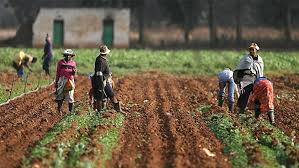Extension science serves both as a practice and as a body of knowledge from which practitioners derive professional insights, especially in informal policy formulation, program implementation, and to assist extension systems in achieving higher performance.
There is no profession that has not benefited from extension services in one way or another. This article considers the functions of agricultural extension systems and the lessons learned from agricultural extension practices.
Read Also: 14 Medicinal Health Benefits of Epimedium grandiflorum (Horny Goat Weed)
Functions of Agricultural Extension

It is essential for end users to understand the specific functions of agricultural extension. Specifically, the functions of agricultural extension include:
1. Preparing Farmers to Accept New Technologies: Agricultural extension prepares and stimulates the farmers’ mindset to help them accept new technologies being introduced. Many farmers are risk-averse, preferring to continue with traditional methods. Extension services, with knowledge of psychology, work to convince farmers to accept innovations being presented to them.
2. Disseminating Research Results and Gathering Feedback: Extension services disseminate research results to farmers and return farmers’ feedback on the use of new technologies to researchers. This feedback system enables researchers to introduce technologies that are economically viable, technically feasible, and culturally compatible.
3. Providing Farm Management Advisory Services: Extension provides advisory services to help farmers effectively and efficiently combine all factors of production for better results. The aim is to improve farmers’ current level of production by ensuring they perform the right tasks at the right time.
4. Assisting with Credit and Input Organization: Although extension is not directly involved in the provision of credit and input facilities, it helps farmers organize support services, such as how to obtain credit, strategies for marketing their products, and the formation of cooperative societies.
5. Advising on Natural Resource Conservation: Extension offers advice on the wise use and conservation of natural resources. As it holds the responsibility for environmental sustainability, extension educates farmers on protecting the environment to ensure it remains sustainable.
6. Promoting Good Family Living Practices: Agricultural extension helps in developing good family living by providing households with education and information on domestic practices and appropriate child-rearing techniques.
7. Facilitating Youth Development: Extension promotes youth development by organizing youth programs and forming youth clubs, such as young farmers’ clubs. These programs contribute to both physical and psychological development, and they can reduce rural-urban migration by introducing young people to sustainable livelihood activities.
8. Training on Leadership Development: As extension education is heterogeneous, it trains both youths and adults in leadership development. Leadership is essential in agricultural extension, as it involves local participation, and local leaders are needed for effective implementation.
Read Also: 10 Medicinal Health Benefits of Podocarpus henkelii (Henkel’s Yellowwood)
Goals of Agricultural Extension

Goals guide the actions of individuals, groups, and organizations. While goals point toward future states, they are influenced by past experiences. Goals often reflect the interests of stakeholders, and these interests vary based on life situations, power dynamics, and developmental philosophies.
The characteristics of a system, including its organizational structure, clientele, operational design, and methods, are directly influenced by its set goals and should be assessed in terms of their contribution to goal achievement.
In the agricultural extension system, members of rural communities, extension staff, researchers, and personnel from supporting organizations are involved. The ultimate goals are technology transfer and human resource development, whether through a narrow technical approach or a broader socio-economic perspective on development.
In conclusion, this article has discussed the functions of agricultural extension. It is now clear that extension services prepare farmers to accept new technologies, disseminate research results to farmers and return feedback to researchers, provide farm management advisory services, and promote good family living, among other key roles.
Do you have any questions, suggestions, or contributions? If so, please feel free to use the comment box below to share your thoughts. We also encourage you to kindly share this information with others who might benefit from it. Since we can’t reach everyone at once, we truly appreciate your help in spreading the word. Thank you so much for your support and for sharing!

